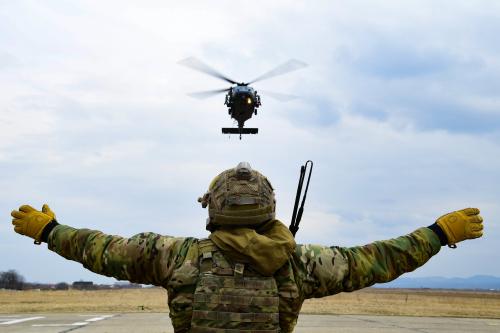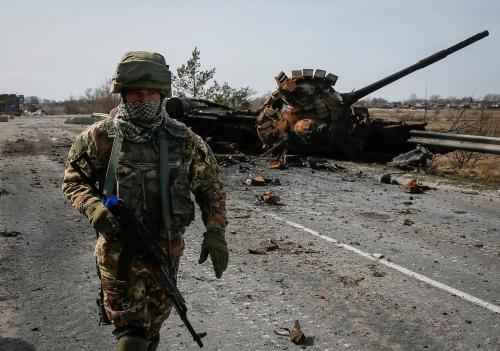On March 23, Raman Preet Kaur moderated a Twitter Spaces discussion with Amy J. Nelson and Alexander H. Montgomery inspired by their recent piece for Brookings’s Order from Chaos blog “Mind the escalation aversion: Managing risk without losing the initiative in the Russia-Ukraine war.”
 ALEXANDER H. MONTGOMERY (@DrAHMontgomery)
ALEXANDER H. MONTGOMERY (@DrAHMontgomery)
Professor of Political Science, Reed College
A no-fly zone initially sounds like something fairly innocuous, you tell people they can’t fly in this zone, and they don’t. Now, the circumstances under which the U.S. has previously done this, most notably, [was] in Iraq just after the Persian Gulf War. It is necessary to have air-superiority, air-dominance, air-supremacy even, in that it involves constantly patrolling the area. It’s not that one can declare it, one needs to have planes up in the sky 24/7, flying over a country which is the size of the state of Texas, and shooting down, or at least threatening to shoot down, any aircraft that happen to violate the no-fly zone. Now, part of that, in order to try to minimize the risk to the planes which are carrying out the no-fly zone, is that we also would need to attack ground-to-air missiles, which are stationed outside of Ukraine in Russia in order to ensure that that the planes won’t get shot down. The problem here, of course, is that would indeed be an act of war and would pull NATO into the war in no uncertain terms with Russia. The other issue here, of course, is that planes are going to be shot down. The no-fly zones which we had in Iraq were essentially entirely uncontested whereas this is very contested airspace.
 Amy J. Nelson (@amyjnelsonphd)
Amy J. Nelson (@amyjnelsonphd)
David M. Rubenstein Fellow, Center for Security, Strategy, and Technology
…An important thing to remember about NATO is there is no automatic anything. Everything is a deliberative process and there have been very few instances in which we can see NATO decisionmaking on a whole host of outcomes or a variety of scenarios. So we’re all getting a big NATO education right now when the alliance was confronted with a shared threat, but under unpredictable, unusual, or unanticipated circumstances. Ironically, it’s a time in which action is of paramount importance but what we’re going to see and what we are seeing is a lot of deliberation. So, a lot of sussing out where redlines are, thresholds, a mental building of the escalatory ladder. We might expect soon, if not already, to see weak link states that are less supportive of a unified NATO front and/or states that are might be more inclined to react militarily before other states are, as well.
The Brookings Institution is committed to quality, independence, and impact.
We are supported by a diverse array of funders. In line with our values and policies, each Brookings publication represents the sole views of its author(s).









Commentary
Escalation aversion in Ukraine: Nuclear and conventional risks
April 13, 2022